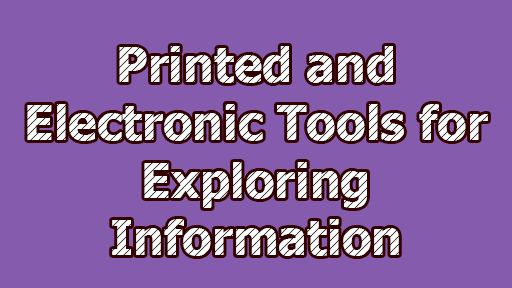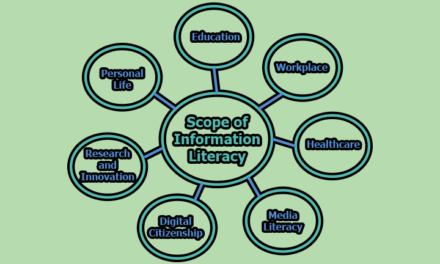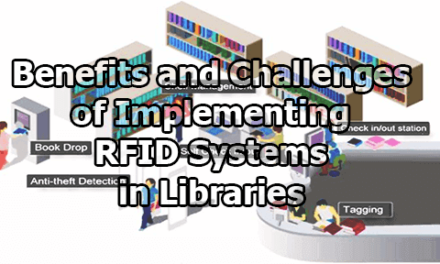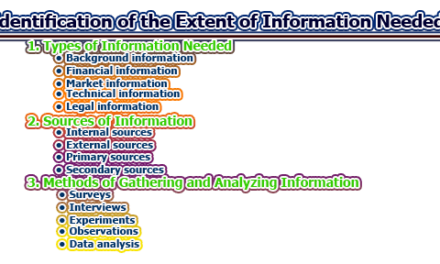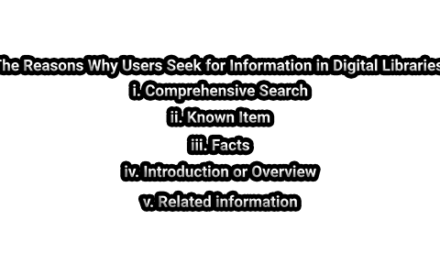Printed and Electronic Tools for Exploring Information:
Printed and electronic tools are invaluable resources that enable us to explore information, expand our knowledge, and engage with diverse subjects. They provide convenient and efficient ways to access, analyze, and share information. Let’s delve into the details of various printed and electronic tools used for exploring information.
Printed Tools:
1. Books: Books are timeless treasures that offer in-depth knowledge and insights across a wide range of subjects. They come in various genres, including fiction, non-fiction, biographies, self-help, and more. Books allow readers to immerse themselves in a narrative or delve into topics of interest with comprehensive detail and expert perspectives.
2. Magazines and Journals: Magazines and journals cater to specific fields of interest, providing up-to-date information, research findings, and analysis on various topics. They offer a curated selection of articles, interviews, and reviews that keep readers informed and engaged in specialized areas, such as science, fashion, business, art, and sports.
3. Newspapers: Newspapers deliver current news and events from around the world. They cover local, national, and international news, politics, business, sports, entertainment, and more. Newspapers provide a comprehensive snapshot of the world, offering diverse perspectives and in-depth reporting on various subjects.
4. Encyclopedias: Encyclopedias provide comprehensive and organized information on a wide range of subjects. They cover diverse fields, including history, science, geography, arts, and culture. Encyclopedias condense vast amounts of knowledge into a single reference source, offering concise explanations, overviews, and cross-references for quick and reliable information retrieval.
5. Reference Books: Reference books serve as valuable tools for exploring specific details, clarifying concepts, and finding quick answers. They include dictionaries, thesauruses, atlases, almanacs, and specialized references for specific disciplines. These resources provide definitions, synonyms, geographical information, historical data, statistical figures, and other relevant information in a concise and easily accessible format.
6. Textbooks: Textbooks are educational resources used in academic settings. They offer comprehensive coverage of subjects, structured learning materials, exercises, and assessments. Textbooks align with educational curricula and provide foundational knowledge in various disciplines. They serve as guides for students, offering a structured pathway for learning and exploring a specific subject in depth.
7. Atlases and Maps: Atlases and maps provide geographic information and facilitate the exploration of the world’s physical and political landscapes. They contain detailed maps of countries, regions, cities, and specific areas of interest. Atlases often include additional information, such as population statistics, climate data, cultural insights, and historical context. These tools are invaluable for studying geography, planning travel routes, and understanding the spatial relationships between different locations.
8. Archives and Primary Sources: Archives and primary sources comprise historical documents, manuscripts, letters, diaries, photographs, and other original materials. They provide firsthand accounts and authentic records of events, making them essential resources for exploring history, culture, and social movements. Libraries, museums, and online repositories offer access to these valuable sources.
9. Brochures and Pamphlets: Brochures and pamphlets are informative printed materials that provide condensed information on specific topics, products, services, or events. They are often used for marketing, education, and public awareness purposes. Brochures and pamphlets offer a concise overview, key facts, visuals, and contact information. They are convenient tools for exploring specific details, comparing options, and making informed decisions. Readers can explore brochures and pamphlets to gather information, understand offerings, and engage with targeted content.
10. Artifacts and Exhibits: Museums, galleries, and exhibitions showcase artifacts, exhibits, and visual representations that offer immersive and interactive experiences. These physical displays provide opportunities for individuals to explore information through visual and sensory means. Artifacts and exhibits can range from historical artifacts and cultural objects to scientific models and interactive installations. They foster exploration, critical thinking, and appreciation of various disciplines, allowing visitors to engage with information in a tangible and experiential way.
Electronic Tools:
1. Search Engines: Search engines, such as Google, Bing, and Yahoo, are powerful electronic tools that enable users to explore vast amounts of information available on the internet. By entering keywords or phrases, users can retrieve relevant websites, articles, images, videos, and other digital content. Search engines provide quick and convenient access to a wide range of information across multiple domains.
2. Online Databases: Online databases store large collections of structured information, often specialized in specific domains. Academic research databases, scientific literature repositories, medical records, business data, and government archives are examples of online databases. They offer advanced search functionalities, allowing users to access scholarly articles, research papers, industry reports, and other valuable sources of information.
3. Digital Libraries: Digital libraries provide access to a vast collection of digitized books, documents, manuscripts, and multimedia resources. They preserve and make accessible historical and contemporary works, offering users the opportunity to explore a wide range of information from different eras and disciplines. Digital libraries often offer search features, categorization, and personalized recommendations to enhance the exploration experience.
4. Online Courses and Learning Platforms: Online learning platforms, such as Coursera, Udemy, and Khan Academy, offer a variety of courses on different subjects. These platforms provide structured educational content, including video lectures, quizzes, assignments, and interactive forums. Online courses allow individuals to explore information systematically, learn at their own pace, and gain new skills and knowledge.
5. Social Media: Social media platforms, such as Facebook, Twitter, and LinkedIn, have become important sources of information and knowledge sharing. Users can follow accounts, groups, or pages related to their interests and access curated content, articles, and discussions on various topics. Social media platforms enable individuals to explore information, engage in conversations, and stay updated on current trends and developments.
6. E-books: E-books are electronic versions of printed books that can be accessed and read on various devices, such as e-readers, tablets, and smartphones. E-books offer the convenience of carrying an entire library in a single device, allowing users to explore a vast collection of books anytime and anywhere. E-books often provide features like adjustable font sizes, bookmarking, highlighting, and searching, enhancing the reading experience and facilitating efficient information exploration.
7. Online Video Platforms: Online video platforms, such as YouTube, Vimeo, and TED Talks, offer a vast library of educational and informational videos. Users can explore a wide range of topics, including tutorials, lectures, documentaries, and expert interviews. Video content provides a visual and auditory learning experience, making it easier to grasp complex concepts, observe demonstrations, and engage with dynamic information.
8. Podcasts: Podcasts are audio-based programs that cover a wide range of topics, from educational content to storytelling, news, interviews, and discussions. Podcasts allow individuals to explore information passively while engaging in other activities like commuting, exercising, or working. They offer a flexible and convenient way to access information, often featuring expert insights, in-depth discussions, and engaging storytelling that can enhance the learning and exploration experience.
9. Data Visualization Tools: Data visualization tools enable users to explore and analyze complex datasets by representing information visually. These tools, such as Tableau, Google Data Studio, and D3.js, transform raw data into charts, graphs, maps, and interactive visualizations. By visualizing data, users can uncover patterns, trends, and insights that might not be apparent in raw data. Data visualization tools facilitate the exploration and understanding of large datasets, making complex information more accessible and digestible.
10. Online Translation Tools: Online translation tools, such as Google Translate, DeepL, and Microsoft Translator, help users explore information in different languages. These tools offer instant translation of text, documents, and even web pages, breaking down language barriers and facilitating cross-cultural exploration of information. Online translation tools allow users to access and understand information from diverse linguistic sources, enabling broader exploration and knowledge acquisition.
It is apparent that printed and electronic tools for exploring information provide a wealth of options for individuals to deepen their understanding, broaden their perspectives, and engage in lifelong learning. By utilizing these tools effectively, individuals can access a vast array of knowledge, explore different subjects, and enhance their intellectual growth and curiosity.
FAQs:
What are printed tools for exploring information?
Printed tools for exploring information include books, magazines, newspapers, encyclopedias, reference books, textbooks, atlases, and maps. These physical resources provide comprehensive and reliable information across various subjects.
What are electronic tools for exploring information?
Electronic tools for exploring information include search engines, online databases, digital libraries, online courses and learning platforms, social media, e-books, online video platforms, podcasts, data visualization tools, and online translation tools. These digital resources offer convenient access to a vast amount of information in various formats.
How can printed tools be beneficial for exploring information?
Printed tools provide tangible and portable resources for in-depth learning and exploration. They offer comprehensive knowledge, specialized information, and historical context. Printed tools like books, reference materials, and atlases allow individuals to delve into specific topics and enhance their understanding.
How can electronic tools be beneficial for exploring information?
Electronic tools offer quick and convenient access to a vast range of information. They enable users to search and retrieve specific data, access online courses and educational content, engage in discussions, explore multimedia resources, and stay updated on current trends. Electronic tools facilitate efficient and interactive exploration of information.
Are electronic tools replacing printed tools for exploring information?
While electronic tools have gained significant popularity, printed tools still hold their value. Both mediums have their advantages and are used in complementary ways. Printed tools offer a tactile experience, while electronic tools provide instant access to a wider range of resources. The choice between the two often depends on personal preferences and the nature of the information being explored.
How do electronic tools enhance the exploration of information?
Electronic tools enhance the exploration of information by offering advanced search capabilities, interactive features, multimedia content, personalized recommendations, and the ability to connect with experts and communities. They provide dynamic and immersive learning experiences, making it easier to engage with information and access diverse perspectives.

Library Lecturer at Nurul Amin Degree College

